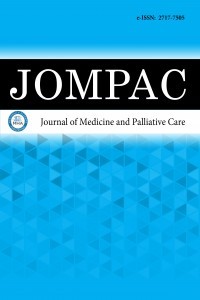1.
Azziz R, Carmina E, Dewailly D,et al. Task force on the phenotype of the polycystic ovary syndrome of the androgen excess and PCOS society. The androgen excess and PCOS society criteria for the polycystic ovary syndrome: the complete task force report. Fertil Steril. 2009;91(2):456-488. doi:10.1016/j.fertnstert.2008.06.035
2.
Wan Z, Zhao J, Ye Y, et al. Risk and incidence of cardiovascular disease associated with polycystic ovary syndrome. Eur J Prev Cardiol. 2024; 31(13):1560-1570. doi:10.1093/eurjpc/zwae066
3.
Toulis KA, Goulis DG, Mintziori G, et al. Meta-analysis of cardiovascular disease risk markers in women with polycystic ovary syndrome. Hum Reprod Update. 201;17(6):741-760. doi:10.1093/humupd/dmr025
4.
Profili NI, Castelli R, Gidaro A, et al. Possible effect of polycystic ovary syndrome (PCOS) on cardiovascular disease (CVD): an update. J Clin Med. 2024;13(3):698. doi:10.3390/jcm13030698
5.
Ertürk M, Öner E, Kalkan AK, et al. The role of isovolumic acceleration in predicting subclinical right and left ventricular systolic dysfunction in patient with metabolic syndrome. Anatol J Cardiol. 2015;15(1):42-49. doi:10.5152/akd.2014.5143
6.
Shahlaee S, Alimi H, Poorzand H, et al. Relationship between isovolumic acceleration (iva) and tei index with pro-bnp in heart failure.Res Rep Clin Cardiol. 2020;11:57-63. doi:10.2147/RRCC.S253688
7.
Adhikary DK, Banerjee SK, Parvin T, et al. Comparison between isovolumic acceleration and conventional echocardiograhic parameters in detecting early right ventricular systolic dysfunction in patients with mitral stenosis.University Heart J.2022;18(2):80-86. doi:10.3329/uhj.v18i2.62676
8.
Rotterdam ESHRE/ASRM-Sponsored PCOS Consensus Workshop Group. Revised 2003 consensus on diagnostic criteria and long-term health risks related to polycystic ovary syndrome (PCOS). Hum Reprod. 2004;19(1):41-47. doi:10.1093/humrep/deh098
9.
Saylik F, Akbulut T. The relationship between presystolic wave and subclinical left ventricular dysfunction assessed by myocardial performance index in patients with polycystic ovary syndrome. Echocardiography. 2021;38(9):1534-1542. doi:10.1111/echo.15166
10.
Demirelli S, Degirmenci H, Ermis E, et al. The importance of speckle tracking echocardiography in the early detection of left ventricular dysfunction in patients with polycystic ovary syndrome.Bosn J Basic Med Sci. 2015;15(3):134-140. doi:10.17305/bjbms.2015.552
11.
Erdogan E, Akkaya M, Bacaksiz A, et al. Subclinical left ventricular dysfunction in women with polycystic ovary syndrome: an observational study.Anadolu Kardiyol Derg. 2013;13(6):534-541. doi:10.5152/akd.2013. 196
12.
Kosmala W, O'Moore-Sullivan T, Plaksej R, et al. Subclinical impairment of left ventricular function in young obese women: contributions of polycystic ovary disease and insulin resistance.J Clin Endocrinol Metab. 2008;93(4):1234-1240. doi:10.1210/jc.2008-1017
13.
Mirzohreh ST, Panahi P, Zafardoust H, et al. The role of polycystic ovary syndrome in preclinical left ventricular diastolic dysfunction: an echocardiographic approach: a systematic review and meta-analysis.Cardiovasc Endocrinol Metab. 2023;12(2):45-55. doi:10.1097/XCE.0000000000000294
14.
Mogos R, Gheorghe L, Carauleanu A, et al. Predicting unfavorable pregnancy outcomes in polycystic ovary syndrome (PCOS) patients using machine learning algorithms.Medicina (Kaunas). 2024;60(8): 1298-1304. doi:10.3390/medicina60081298
15.
Sebastian A, George S, Vinod AK, et al. PCOS risk prediction: integrated algorithm approach.Int J Sci Technol Eng. 2024;23(2):178-184. doi: 10.22214/ijraset.2024.63075
16.
Jin J, He W, Huang R, et al. Left ventricular subclinical systolic myocardial dysfunction assessed by speckle-tracking in patients with Cushing’s syndrome. J Clin Cardiol. 2024;45(1):78-85. doi:10.1007s12020- 024-03980-4
17.
Vijayakumaran C, Sharma P, Ankit R. Using a predictive approach to identify and treat hormonal imbalance and irregular period of ovarian system. IEEE Trans Biomed Sci. 2024;62(3):230-237. doi:10.1109/ICAAIC 60222.2024.10575774
18.
Orio F, Giallauria F, Palomba S, et al. Cardiopulmonary impairment in young women with polycystic ovary syndrome.J Clin Endocrinol Metab. 2006;91(8):2396-2403. doi: 10.1210/jc.2006-0216
19.
Uluçay A, Tatli E. Myocardial performance index.Anadolu Kardiyol Derg. 2008;8(2):87-93.
20.
Aşkın L, Yuce EI, Tanrıverdi O. Myocardial performance index and cardiovascular diseases. Echocardiography. 2023;40(6):1123-1130. doi: 10.1111/echo.15628
21.
Correale M, Totaro A, Ferraretti A, et al. Peak myocardial acceleration during isovolumic relaxation time predicts the occurrence of rehospitalization in chronic heart failure: data from the Daunia heart failure registry.Echocardiography. 2014;31(5):557-564. doi:10.1111/echo. 12390
22.
Correale M, Brunetti ND, Totaro A, et al. Peak myocardial acceleration during isovolumic relaxation time predicts the occurrence of rehospitalization in chronic heart failure: data from the Daunia heart failure registry.Eur Heart J. 2013;34(5):P2463. doi:10.1111/echo.12390
23.
Tigen MK, Karaahmet T, Gürel E, et al. The role of isovolumic acceleration in predicting subclinical right and left ventricular systolic dysfunction in hypertensive obese patients.Turk Kardiyol Dern Ars. 2011;39(7):584-589.
24.
Sciatti E, Vizzardi E, Bonadei I, et al. Prognostic value of RV isovolumic acceleration and tissue strain in moderate HFrEF.Eur J Clin Invest. 2015;45(4):375-381. doi:10.1111/eci.12505
25.
Omar AM, Murphy SP, Felker GM, et al. Isovolumic contraction velocity in heart failure with reduced ejection fraction and effect of sacubitril/valsartan: the PROVE-HF study.J Card Fail. 2024;30(2):101-110. doi:10.1016/j.cardfail.2023.10.001
26.
Kim JY. Imaging marker for acute kidney dysfunction in patients with heart failure.J Cardiovasc Imaging. 2023;29(5):450-456. doi:10.1016/j.cardfail.2023.10.001

